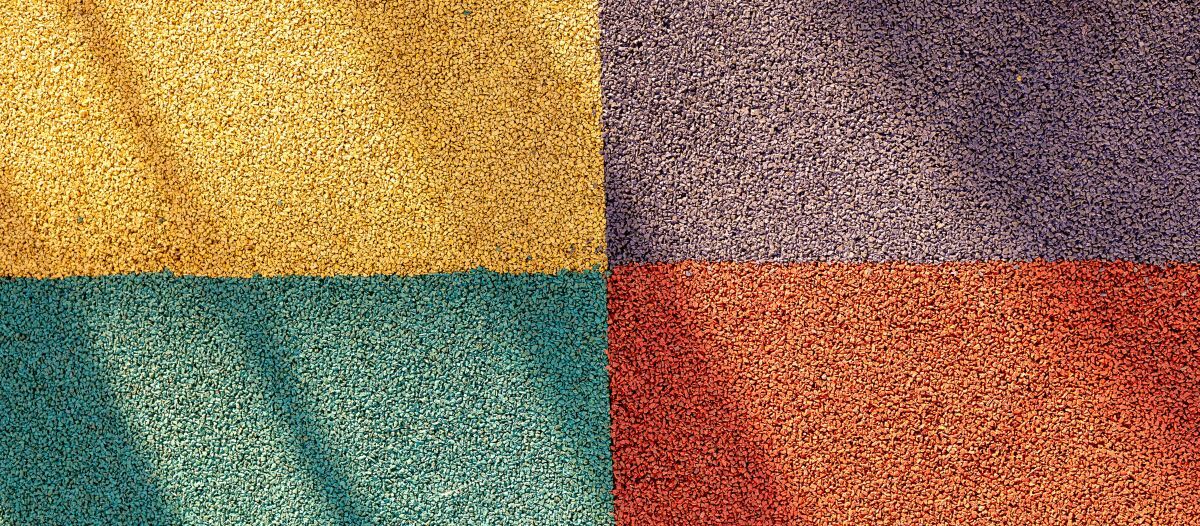Back to Basics
4 simple, cost-effective ways to care for carpets

Technology advancements and modern practices in the facility management industry drive FMs to spend more money on new services and tools to solve age-old problems. While shiny, new technologies and methods may seem innovative, their implementation is not always the best strategic move. Sometimes, going back to tried-and-true basics is still the best option.
This is especially true when it comes to carpet care. Take newer models of backpack vacuum systems as one example. Most of these tools are nice to use ergonomically: They are lightweight and fit well on the shoulders. But the vacuum attachment that actually vacuums is not very effective. Its Teflon-coated head glides easily over the floor making it easy to push, but it does not get deep enough within the carpet fibers to get all the dirt and debris. Many similar, more recent vacuuming technologies have been designed with an overemphasis on ergonomics at the expense of performance.
On the other hand, older models of beater-bar vacuums are much more effective. They might be heavier to push, but that is because they create better suction as they dig deeper into carpet fibers all the way to the backing to suck up dry particulate. A good beater-bar vacuum is around the same price as newer backpack systems but at least twice as effective at removing soil from carpets. In this case, the more efficient option is clear.
Do not eschew modern methods altogether
Of course, some modern practices can bring better results. Take the old-school methodology around planning carpet cleaning as one example. The traditional “four-two-one” approach — cleaning high-traffic areas four times a year, medium-traffic areas twice a year and low-traffic areas once a year — has grown outdated in light of new tactics.
A more modern strategy is frequency-visit programs that assess areas with a sharper lens to outline cleaning needs in entryways, transitions from hard to soft surfaces, breakrooms, cafeterias, etc. Cleaning is prioritized by where the soil is rather than mapped out based on a floor plan alone.
Once FMs plana more modern approach, however, they should think about how they can simplify their cleaning practices and rely on established methodologies for more affordable and impactful results.
Making the case for the basics
FMs will not always have the easiest time convincing their employers or building owners that simple, basic, traditional methods can be more effective than new and innovative technologies or strategies. To start making the case, focus on outlining the best fit for the purpose.
Companies once developed cleaning technologies around a specific function, touting their performance ratings to prove their effectiveness. Now, marketing teams focus on other aspects by emphasizing various attributes of cleaning systems: noise, smell, ease of use, etc. As more competitors enter the scene, they try to market their top attribute or characteristic as the most important for that kind of product.
When FMs go back to the basics, they should also focus on what has the best functionality for the exact purpose they need, then prioritize other attributes deemed important on a weighted scale to see what really stands out as the most appropriate selection. Often, the effectiveness of basic tools and practices will outweigh the shiny attributes of newer technologies and methodologies.
Beyond highlighting fit for purpose when trying to make the case for going back to the basics, FMs can also bring up the cost question — both in terms of capital expenditures and ongoing maintenance. For example, modern technology might seem like it will be easier, cheaper and more efficient to repair over time, but it tends to be the opposite case for many tools.
Before the integration of complex circuits, software and motherboards into carpet cleaning technology, technicians or FMs could usually repair their own equipment with simple nuts, bolts and wrenches. Ongoing maintenance for older tools tends to be much more financially sustainable because it can happen in-house. With newer carpet cleaning equipment, even opening the machine can be risky because it could void the warranty. Technicians or FMs must ship the machine and pay a mechanic who specializes in that piece of equipment. Not only does the repair cost more money, but it also means more time the tool is out of service and its intended purpose goes unfulfilled in a building.
Back to basics for carpet care
Carpets are a prime example of building elements that benefit from many traditional methods. Instead of investing more money and time into innovative tools for cleaner carpets and seeing only mediocre results, FMs should also focus their efforts and attention on basic approaches to achieve cleaner carpets with extended longevity:
1. Dry soil removal with a beater-bar vacuum
As discussed above, older vacuum models with beater bars tend to be more efficient than the newer ergonomic backpack options. Beater bars are the fastest way to remove dry soil, like silicon sand, from carpets — and they are great at removing excess ice melt from entryway systems.
How often to vacuum will depend on the foot traffic of a specific area. In most buildings, high-traffic areas like entryways should be vacuumed at least once a day. High-traffic areas in busier establishments like hotels or retail stores, however, would benefit from vacuuming multiple times per day. Lower-traffic areas like storage rooms or unoccupied offices should be vacuumed weekly.
Routine vacuuming with a beater-bar device will ensure carpets stay as free of dry soil as possible, which is the first step to keeping carpets clean and extending their life. Vacuuming removes only dry particles, however, so interim and restorative deep cleans are still necessary on occasion to take care of the tougher grime.
2. Entry mat systems
New flooring materials marketed as low- or even no-maintenance hit the catalogs quite frequently these days. Such options might have some desirable attributes, but mats are the best way to remove excess soil before it is tracked farther into the building. Well-maintained entryway systems with strategically placed mats will always be a tried-and-true system for protecting floors.
Entry mats should be divided into three zones, one outside and two indoors. The mat outside should be in front of the building's entrance and should be able to scrape grit and heavy dirt particles from shoes. The next zone should be right inside the entrance with a mat that can scrape and absorb moisture. Lastly, the third zone should be farther inside the building, perhaps a walkway just beyond the second zone, and should include a mat capable of absorbing any additional moisture on shoes.
Remember, even the best-placed entry mats will not do their jobs well if they are not maintained. Think about how many people enter any given building in a day. Every shoe tracks particles and moisture from outside through the doors. Entry mats can catch the particles and moisture, but at some point, they become saturated and cannot hold onto any more. FMs must ensure proper cleaning to keep mats free of built-up soil. For the best results, use a counter-rotating brush machine to loosen particles, then perform a hot-water extraction to suck up the suspended soil.
3. Counter-rotating brush machines
Counter-rotating brush machines deserve a closer look. They are excellent tools for carpet cleaning because they pile lift carpet fibers at the same time they agitate them, all the way from the surface to the backing. It is the only machine that lifts while agitating, and although that might sound intense and abrasive, it works without damaging carpets, unlike some other spin bonnet machines that void the warranty.
FMs should ensure anyone servicing their carpets for interim or restorative cleans has a counter-rotating brush machine. It is an excellent old-school method that still does a great job of cleaning carpets. If FMs want to purchase counter-rotating brush machines on their own, they should look for well-made metal units with easily available replacement parts to mitigate high, ongoing maintenance costs and downtime. Brush stiffness (designated by color) is an important consideration, too, and depends on what is being cleaned: white brushes for wool, blue/green for standard floors, and yellow for ceramic tile or concrete.
4. Fans for proper drying
Leaving carpets damp for too long after cleaning is the surest way to quickly ruin them. This can create breeding grounds for mold and negatively impact the indoor air quality of a space. Companies market some chemicals as “no-wick” solutions that are supposed to leave carpets dryer than traditional alternatives, but even so, skipping the old-school fanning process is never a wise move. Fans are the only proper way to accomplish a carpet drying process after hot water extraction.
A dry polymer carpet cleaning method is an excellent option to consider in lieu of hot water extraction, as it provides a thorough deep cleaning but requires a fraction of the dry time.
Just because something is new does not necessarily mean that it is more effective than old-school practices. That principle is especially valuable when it comes to carpet cleaning, for which companies introduce new technologies and chemicals all the time. FMs should evaluate any new investments carefully to determine whether sticking to the basics might be a more affordable option with higher returns.

Brian Miller is a business support specialist at milliCare Floor & Textile Care. His career in the field began when he was attending Ohio University. In 2007, he took a job as a technician while working toward his bachelor’s degree in marketing and strategic leadership. After college, he continued to build his knowledge of floor and textile care on top of his expertise in strategy, and he has since worked in the floor and textile care industry in roles ranging from floor technician, technical sales rep and general manager for various companies across the U.S. In his current role as business support specialist at milliCare Floor & Textile Care, his primary responsibility is supporting the company’s franchises and helping them to improve their efficiency and productivity as they provide essential services to commercial facilities in their local markets.
Read more on Project Management and Operations & Maintenance
Explore All FMJ Topics









